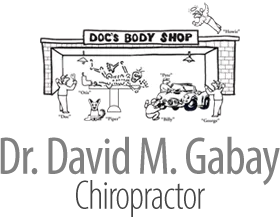As with the rest of our physical selves, we don't think about our bones until something goes wrong. Bones are just there, under the surface and unseen, normally never taking up space in our conscious thought processes. Trauma, of course, can injure a bone. But in most circumstances a bone bruise or a fracture heals on its own in due course. You might need a brace, sling, or cast to protect the bone while it's rebuilding, but within four to six weeks everything is back to normal.
On the other hand, many actual diseases can affect bones for a very long time, perhaps even for the rest of your lifetime. Some of these serious conditions are preventable. Some are not. Osteoporosis is a disorder which may have serious consequences, including disabling hip fractures and crippling fractures of the lumbar vertebras. For many people, however, osteoporosis is preventable, and it's very important to know how to do that.
Osteoporosis involves loss of bone substance and disorganization of bone structure. "Osteo" means bone and "porosis" means pores or passages. In osteoporosis the biochemical bony matrix is broken down and bony tissue itself is resorbed, creating "passageways" or holes in the affected bone. Metabolic factors involved in the process of osteoporosis include calcium levels and vitamin D levels, as well as the activity of bone cells - osteoblasts - which produce bone matrix.
As with everything else in the human body, if you don't use it, you'll lose it. Bone appears to be hard and durable, a finished product, but in fact bone tissue is highly dynamic. Bone is continually being built up in response to physiologic, weight-bearing stresses such as exercise. But bone is continually being broken down in response to metabolic needs elsewhere in the body. A dynamic tension exists between these two processes, and in osteoporosis the pendulum has swung to the side of breaking down bone tissue. The obvious consequences include weakening of bone's structural strength. Eventually, long bones such as the thigh bone or strategically located bones such as the lumbar vertebra have lost so much structural integrity that they break under pressure of previously normal weight-bearing loads.
Like the rest of the components of our bodies, our bones are a precious natural resource. Unlike gas or coal, our bones are a renewable resource. But we must pay attention to the need for these structures to renew themselves. If a bone isn't being used efficiently, higher-priority metabolic needs in other locations will cause important biochemicals to be taken out of the bone. The bone, such a thigh bone, will begin to lose its structure. The appropriate question is how can we ensure that our bones are being used efficiently. How can we ensure that our bones are in fact dynamic structures, rather than merely cages to protect our vital organs or coat racks on which to hang our muscles.
One of the main answers to these questions, which after all really are questions regarding how to achieve good health, is regular exercise.1,2,3 Bones will retain their metabolic structure if they are required to do so. The body is very smart and locates precious resources where they are needed. If weight-bearing loads are consistently placed on your spine and long bones, these dynamic structures will not only retain their shape and strength but in fact will build more bony layers and become stronger. And of course, if we want to have a lifetime of vibrant, vital health, we want to have strong, healthy bones that will help us make it so.
